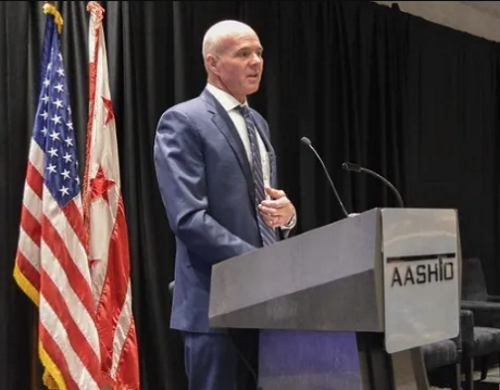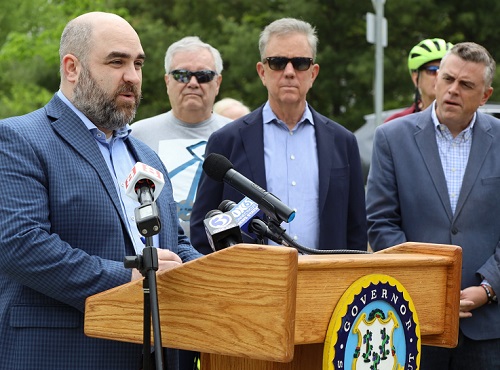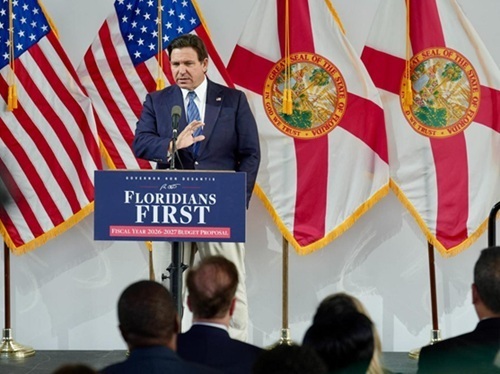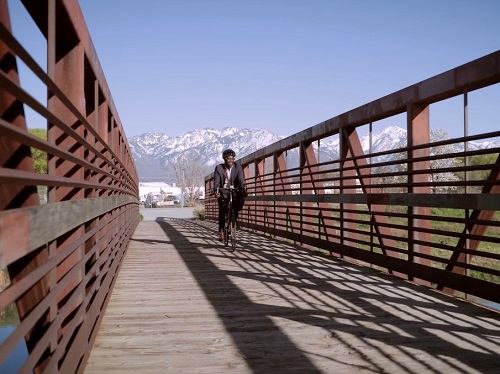The Utah Department of Transportation recently issued nearly $95 million to support 19 trail projects – including the construction of new paved trails as well as funding for planning efforts to fill in existing trail gaps – as part of creating a regional “Utah Trail Network” across the state.
[Above photo by Utah DOT]
That agency said that it collaborated with communities statewide regarding the allocation of that funding – approved by the Utah Transportation Commission – to select the key projects for this statewide trail network.
Of the projects selected for this inaugural round of funding, 13 are considered construction ready and could get underway as soon as 2025, the agency said – depending on contractor schedules, supply availability and other factors like weather.

“Generations from now people will look back at this moment and realize how pivotal the Utah Trail Network was in changing the way we travel,” noted Carlos Braceras, executive director of the Utah DOT, in a statement. “These projects will connect communities in ways that provide transportation choices for everyone to commute, recreate, and enjoy.”
Braceras noted that, in 2022, Governor Spencer Cox (R) supported the vision for a statewide trail network that would connect state residents of all ages and abilities to their destinations and communities throughout the state. Then, in 2023, the state legislature created the Active Transportation Investment Fund to help support Utah’s trail-building endeavor.
“We have heard the public asking for more trails and are inspired by the trail planning and development efforts across the state,” Braceras said. “These efforts are bringing people together, and we want to do our part by connecting communities through a state funded program that will build trails as part of the state’s transportation system.”
Other state departments of transportation are engaged in similar efforts.
For example, Governor Ned Lamont (D) and the Connecticut Department of Transportation recently hosted a grand opening event for the Putnam Bridge Trail Connection, which provides non-motorized access across the Connecticut River by linking the shared-use path on the Putnam Bridge to Great Meadow Road in Wethersfield and Naubuc Avenue in Glastonbury.

Built by the agency and funded by the state, the expanded trail connection provides a safe, convenient, and functional active transportation option for the traveling public, the governor noted in a statement.
“The Putnam Bridge Trail Connection gives bicyclists and pedestrians a new option of crossing the Connecticut River without needing a motor vehicle, linking the active communities of Wethersfield and Glastonbury,” Gov. Lamont pointed out.
“We anticipate that people will find this trail to be a convenient way of getting to work, exploring local shops and restaurants, or just enjoying a scenic recreational opportunity – all while being able to leave the car at home,” he said.
“This collaborative effort demonstrates the need to build alternative routes for all road users to decrease injuries and fatalities on our roadways,” added Garrett Eucalitto, commissioner of the Connecticut DOT.
There are significant economic benefits to making such trail investments as well.
According to a recent episode of the “Talking Michigan Transportation” podcast – produced by the Michigan Department of Transportation –Julie Clark, chief executive officer for the Traverse Area Recreation and Transportation or TART Trails advocacy group, discussed how trail networks can enhance quality of life for residents while also providing an economic boost.
The economic value of trail networks comes from the key role they play in outdoor recreation, Clark said.
For example, in 2021, the U.S. Bureau of Economic Analysis released statistics estimating that outdoor recreation accounted for $862 billion in economic output or consumer spending), 1.9 percent or $454 billion of gross domestic product, and supported 4.5 million jobs.
 States
States
NCDOT Staff Participate in ‘Explosive’ Technical Training
December 19, 2025 States
States

